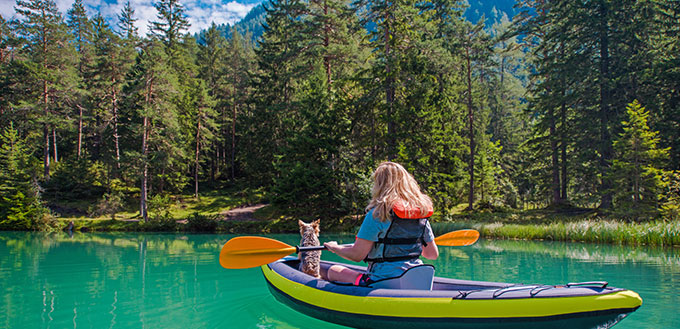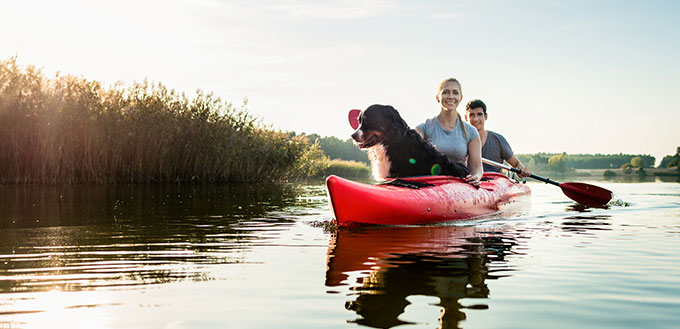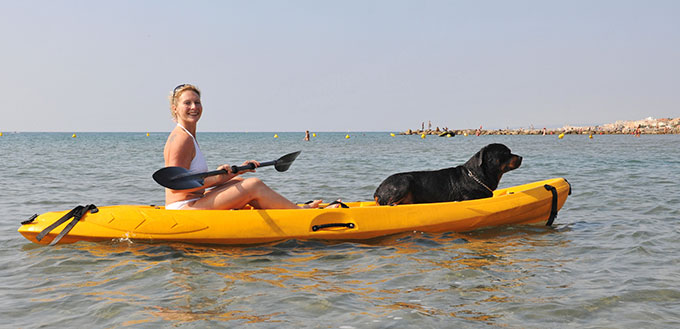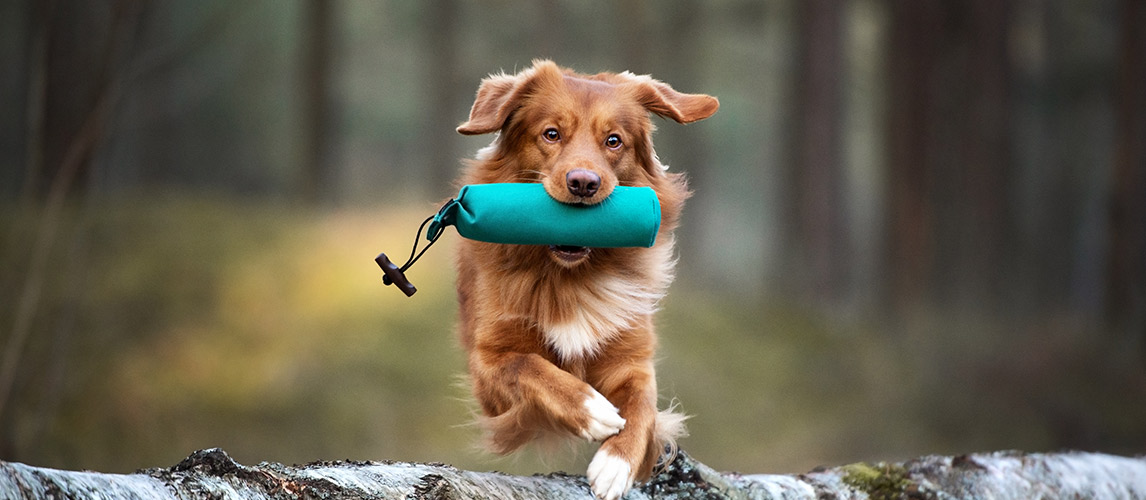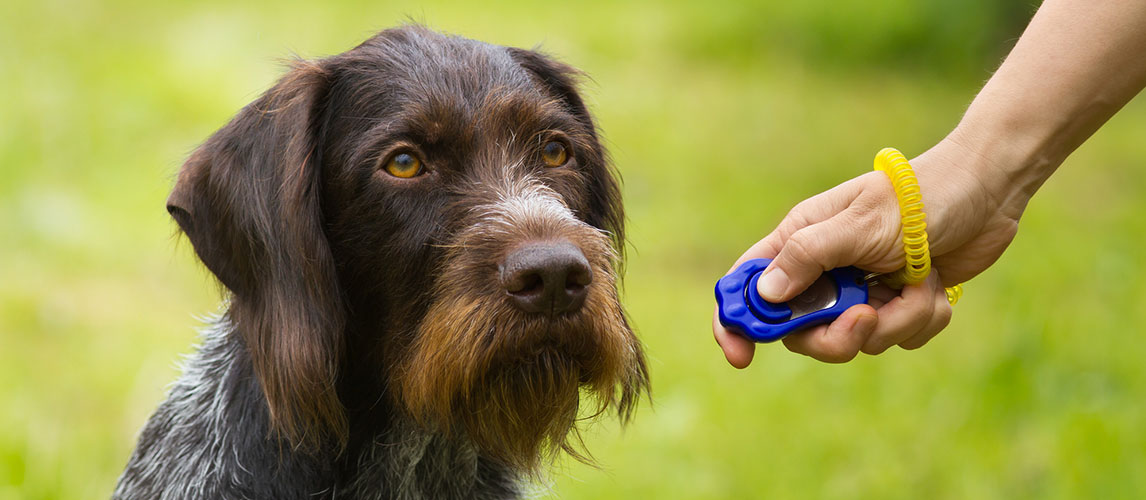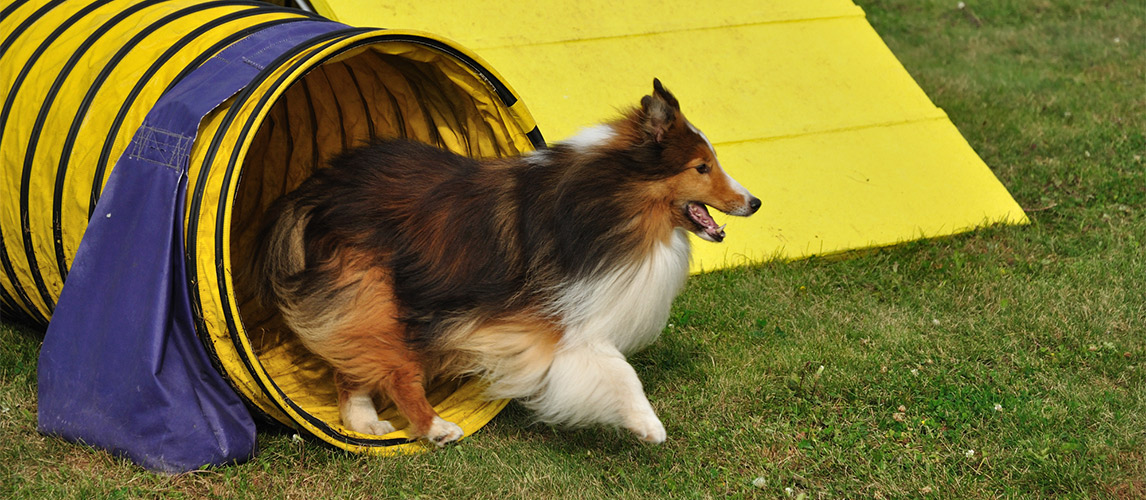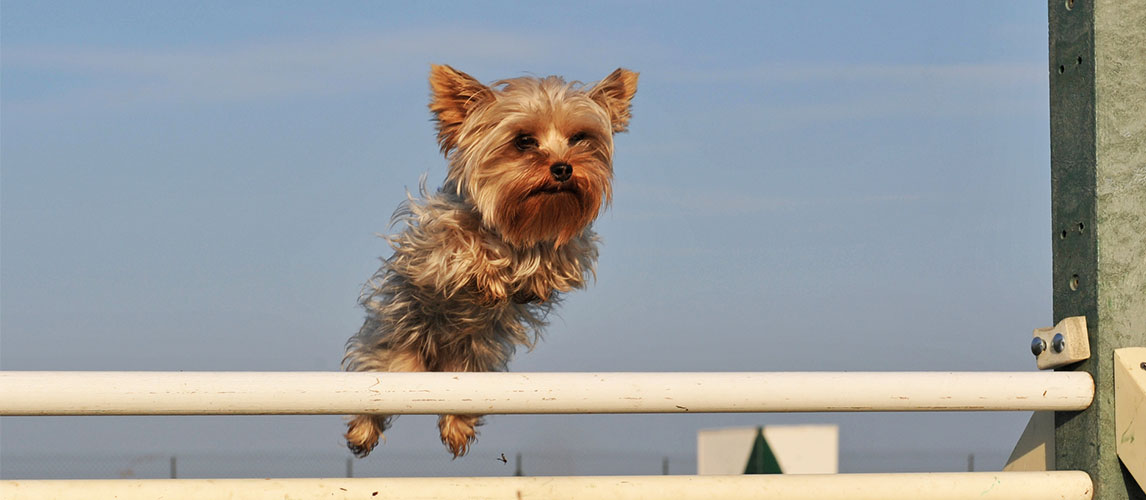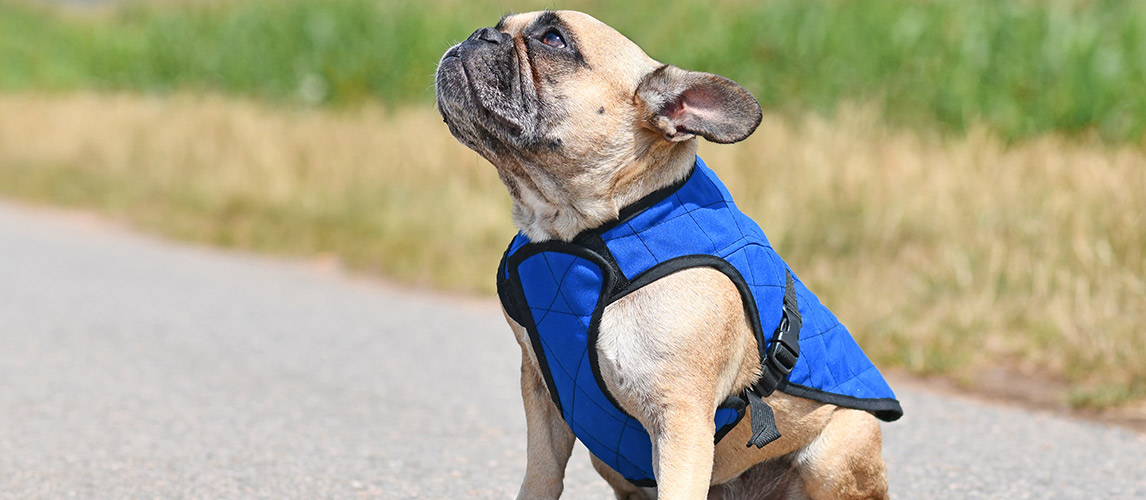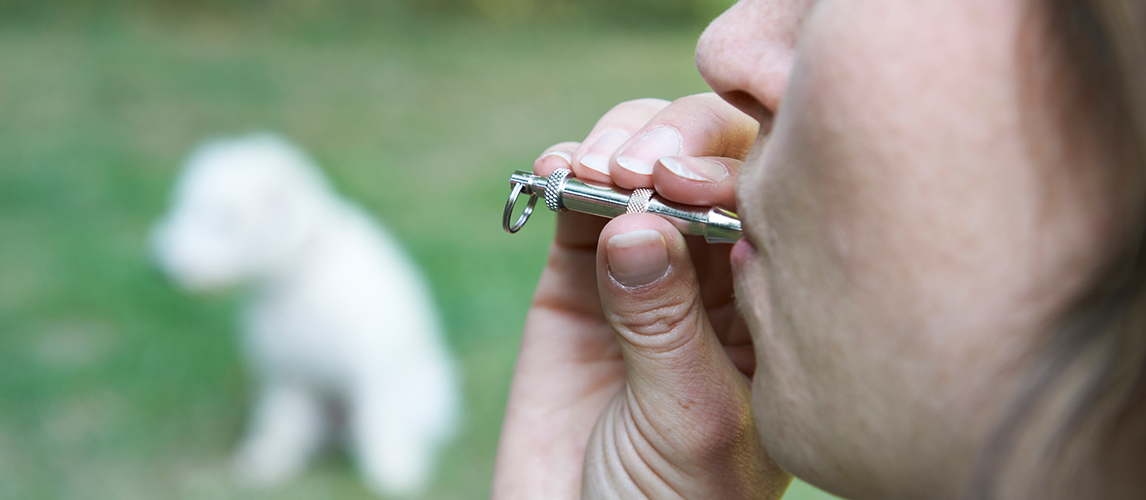Time out on water is not only a great way to exercise, but it’s a fantastic way to de-stress and get back to nature. And, if you’re a dog owner, you can also take your pet along for the ride. While not all dogs are water-babies, if your dog can swim and is happy to sit while you paddle, there’s no reason why your furry friend can’t be your kayak buddy. So, if you’ve always wanted to take your dog out kayaking, then now’s the time to take the plunge.
Here’s what you need to know about kayaking with dogs.
Is Your Dog Up for Kayaking?
Mixing water, a buoyant kayak and an anxious, energetic or frightened dog can be a recipe for disaster – at the very least it won’t be fun for either of you. So, when deciding whether it’s safe to go kayaking with dogs, consider the following:
Temperament – your dog’s personality and whether they have the right temperament to be out on the water is an essential consideration. An excitable or anxious dog is going to be unpredictable and can literally upset the boat; a dog that’s obedient and happy to sit relatively still for periods of time is your ideal kayak buddy.
Water ability – some dogs simply don’t like water and there’s no point pushing them if they dislike even getting their paw wet. You also need to be confident in your furry friend’s swimming ability as he needs to be able to swim back to the kayak should he fall out.
Health – your dog’s wellbeing must always come first so if his age or health means he’s less mobile or robust and could be affected by the water, weather or physical exertion, it’s best to leave him at the quayside.
What is the Best Kayak for Dogs?
Just like dogs, kayaks come in many shapes and sizes, and not all are ideal for a water trip with your pet. The best kayak is one that’s large enough for you both to comfortably fit, ideally with a space your dog can tuck down in. The style of kayak also depends on your pooch’s temperament. A sit in kayak or tandem kayak with a large cockpit may be best for dogs that like a little security or are on the larger side. While for the more relaxed pet, sit on top kayaks mean he can spread out, as well as move around as the flatter bottom makes it more stable. If you’re in any doubt, check out our guide to the best kayaks for dogs.
The Essentials Your Dog Needs
Your pet will need his own paddling kit for safety and comfort. Top of the list is a Personal Floatation Device (PFD), which is a life vest designed for dogs. With a handle on the back, a PFD is essential even if your dog can swim, as it ensures that should he fall in the water, he stays on the surface and can be seen. Plus, the handle makes it easier to get him back in.
Related Post: Dog Water Bottle
Other essentials to pack include fresh water and bowl, food plus some treats (stored in a watertight container), pet-safe sunscreen and a first aid kit. Add to the list a leash (for when you get ashore, never to attach inside the kayak), a doggy water toy or two, a beach towel (so he has something comfortable to sit on) and those all-important poop bags and you should be good to go.
Related Post: Dog First Aid Kit
How to Teach Your Dog to Ride in a Kayak
You have a keen pooch, the right kayak and the essential doggy kit, but before you hit the water, you need to get your dog prepped and ready. So, if you’re wondering ‘how can I get my dog to kayak?’, here’s what to do.
Get them used to kayak. You should ensure your dog is totally familiar and comfortable with the kayak. This means getting your dog to spend time sitting inside or on top of the kayak on dry land, so he can explore and spend time in it. Using treats and praise can go a long way and will help your pooch to associate the canoe with fun with his human.
Related Post: Dog Treats
The right commands. Before you take to water, you should confidently be able to direct your dog. Your dog needs to know some important commands so in any situation, you can keep him under control. As well as ‘sit’, ‘stay’ and ‘lie down’, he should be able to respond to:
- ‘Okay’ – your dog needs to be told when it’s okay for him to move, including when he can jump in and out of the kayak
- ‘Come’ – you need to be able to guide your dog where he needs to be, especially under pressure
- ‘Leave’ – there’s a lot to distract your pooch out on the water and he may pick something up or be excited by the nature and wildlife. To keep everything safe, he needs to know what he shouldn’t touch.
Getting in and out. A smooth entry and exit into the kayak is key so before you go on a proper trip, it’s a good idea to practice with your dog or dogs. Try to practice on the shore side, or in shallow water so your dog can also get used to the movement of the kayak as he steps in and out. Always be in the kayak first before calling your pup to get in, so the boat doesn’t float away with him. To get out of the kayak, come into the shallows and either give him the command to get out or step out first before lifting him out.
Safety Tips
Safety should be your priority when kayaking with a dog, so when paddling out with your pooch:
- Never tie your dog inside the kayak. If your dog is secured to the kayak and it capsizes, you may not be able to untie him quickly enough
- Ensure your dog has his personal floatation device on before he gets into the kayak and never take it off while you are both out on the water
- Don’t forget a supply of fresh water for you both as keeping hydrated is essential
- Always keep in calm waters – if the water gets rough, turn back for home.
Setting Out on Your Kayak Trip
Now that you and dog are ready to cast off, it’s time to have an awesome time kayaking. For extra safety, it’s a good idea to go out on the water with another friend, at least for the first few times, so you have some back up while you and your dog find your kayaking mojo. Start with a few short trips – a lake, pond or sheltered bay are ideal, with the shoreside always in sight so should your pupper get anxious, dry land is not too far away.
Paddle slowly and calmly, keeping an eye on how your dog reacts – as he gets more confident, you can extend how long you stay on the water or try new places to explore. Talk, reassure and praise your dog and reward his good behavior while out in the kayak with the occasional treat.
What to do if Things Don’t Go to Plan
Not all kayak trips are plain sailing, and with the added canine element, you should always be prepared if things go awry.
He jumps ship – your pooch can decide to go overboard for many reasons – he’s spooked, he accidentally falls, the water looks too inviting or he prefers the company of the wildlife to you. As long as your dog has his life vest, he should be ok, but you need to keep calm as you don’t want to scare him. Give your commands clearly – tell him to come to you as you slowly paddle towards them. Lift your paddle (secure it to the kayak) as you get close and grip he thandle or neck of their PFD to pull them parallel to the kayak. Now hook under their front legs with your arms and scoop them up so they can clamber back on board.
The kayak tips – a capsize can happen to any kayaker, and with your furry bud on board, you have an extra ‘person’ to think about. As long as your pooch isn’t tied to the kayak, he should surface around the same time as you, so bring them close to you. Get back to the kayak as soon as you can and locate the paddle, which should be floating nearby. Put the paddle back inside the up-righted canoe, then gripping your dog’s life vest, push them up and back on board. Now you can heave yourself back in, reassuring your pet, before checking you are both ok.
The Joy of Kayaking with Dogs
As with most things in life, practice makes perfect and so when it comes to how to kayak with a dog, the key is to take your time as they get used to the movement of the boat and build confidence and enjoyment of being out on the water. Make it fun, keep it safe and before you know it, you will soon be paddling happily with your best friend on board.
And, once you become a kayaking ‘dream team’, then the water world is your oyster and you can start planning some awesome trips that your water-loving dog can really dive into.
Sources:
- Jennifer Berg, CPDT-KA, Paddlesports Safety with Your Dog, Whole Dog Journal
- Dr. Patty Khuly VMD, Paddling With Dogs 101, Vetstreet


